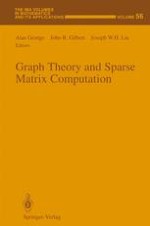1993 | Buch
Graph Theory and Sparse Matrix Computation
herausgegeben von: Alan George, John R. Gilbert, Joseph W. H. Liu
Verlag: Springer New York
Buchreihe : The IMA Volumes in Mathematics and its Applications
Enthalten in: Professional Book Archive
